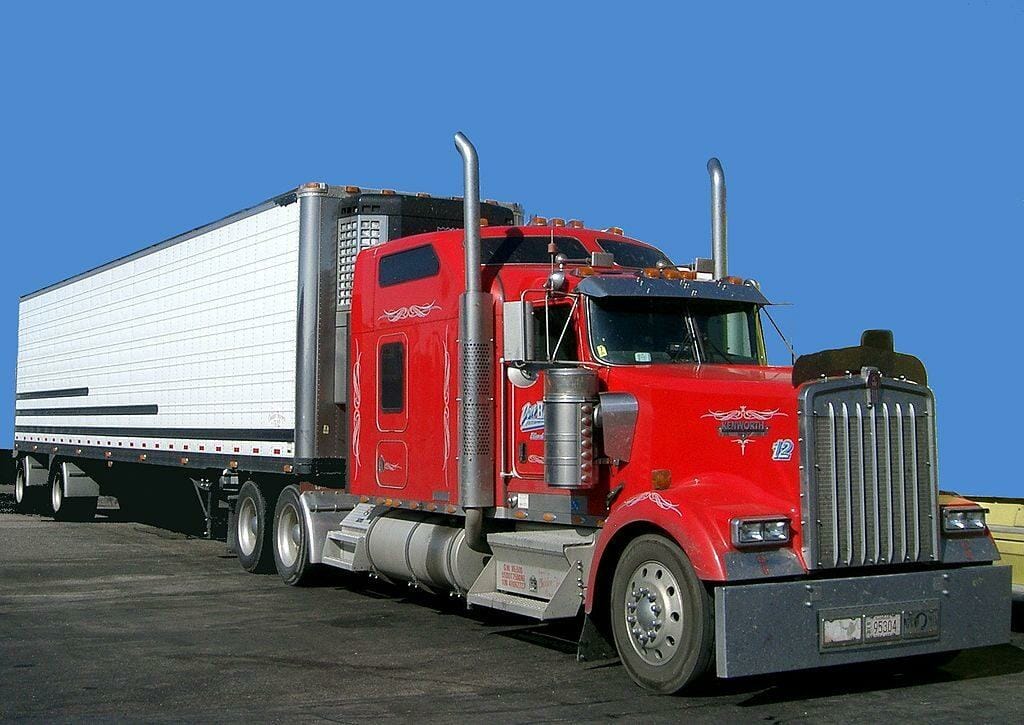Semi Truck Kelley Blue Book: Navigating the Complex World of Commercial Truck Valuation pickup.truckstrend.com
In the vast and specialized world of commercial trucking, understanding the true value of a semi-truck is as crucial as knowing your routes. Unlike the consumer automotive market, where the familiar Kelley Blue Book (KBB) provides a relatively straightforward guide for car values, the realm of heavy-duty trucks operates on a different, more intricate playing field. There isn’t a single, universally recognized "Semi Truck Kelley Blue Book" that provides definitive values at the click of a button. Instead, valuing a semi-truck involves a sophisticated blend of specialized data sources, market analysis, and expert insight.
This comprehensive guide will demystify the process of semi-truck valuation, exploring the resources, factors, and strategies necessary to accurately assess the worth of these powerful machines. Whether you’re a seasoned owner-operator looking to upgrade, a fleet manager planning acquisitions, or a new entrant seeking to understand your investment, grasping the nuances of semi-truck valuation is paramount for making informed decisions.
Semi Truck Kelley Blue Book: Navigating the Complex World of Commercial Truck Valuation
Understanding the Commercial Truck Valuation Landscape
The primary reason a direct "Kelley Blue Book" equivalent for semi-trucks doesn’t exist is the sheer complexity and specialization of the commercial vehicle market. Passenger cars are mass-produced with relatively standard configurations, leading to predictable depreciation curves and widespread data. Semi-trucks, however, are highly customized, often built for specific applications, and subject to more volatile economic and regulatory pressures.
Instead of one definitive source, commercial truck valuation relies on a mosaic of industry-specific tools and professional expertise:
- EquipmentWatch (Truck Blue Book): This is perhaps the closest parallel to a "Blue Book" for heavy equipment and trucks. EquipmentWatch provides data-driven insights, including residual values, market trends, and historical pricing for a vast array of commercial vehicles. Their "Truck Blue Book" offers valuation data for a wide range of medium and heavy-duty trucks.
- Ritchie Bros. Auctioneers / IronPlanet: As the world’s largest industrial auctioneers, Ritchie Bros. and its online platform IronPlanet provide a treasure trove of real-world sales data. Auction results reflect actual market demand and prices for trucks sold under various conditions.
- Truck Paper / Commercial Truck Trader: These online marketplaces are invaluable for understanding current asking prices for trucks listed by dealers and private sellers. While asking prices aren’t always selling prices, they offer a good benchmark for market expectations.
- J.D. Power Commercial Truck Guide: J.D. Power offers valuation services and market insights specifically for the commercial truck sector, providing data on residual values and depreciation.
- Dealer Networks and Industry Experts: Experienced commercial truck dealers and independent appraisers possess deep knowledge of local markets, specific truck models, and the nuances that influence value. Their insights are often critical, especially for unique or highly customized trucks.

The market for semi-trucks is influenced by factors far beyond typical vehicle wear and tear, including freight rates, fuel prices, new truck production, and ever-evolving emissions regulations. This dynamic environment necessitates a more multi-faceted approach to valuation.

Factors Influencing Semi Truck Valuation
Accurately valuing a semi-truck requires a meticulous assessment of numerous interconnected factors. Unlike passenger vehicles where mileage and age are often dominant, commercial trucks have a much broader array of variables at play:
- Make and Model: Certain brands (e.g., Peterbilt, Kenworth, Volvo, Freightliner, Mack, International) hold stronger resale values due to reputation for reliability, durability, and a robust parts and service network. Specific models within these brands also have varying demand.
- Year of Manufacture: Age is a significant depreciating factor, but it’s also linked to emissions standards. Older trucks (pre-2007 or pre-2010 emissions) might be cheaper but could face restrictions or higher maintenance costs related to older emissions systems (e.g., EGR, DPF). Newer trucks (post-2010 with SCR technology) generally command higher prices.
- Mileage and Engine Hours: For a semi-truck, mileage is critical, but engine hours can be equally important, especially for trucks that idle frequently or operate in stop-and-go conditions. A truck with high mileage but meticulously documented maintenance might be valued higher than a lower-mileage truck with an unknown history.
- Condition (Cosmetic & Mechanical): This is paramount. A well-maintained truck with a clean exterior, functional interior, and documented mechanical care (engine, transmission, differentials, tires, brakes) will always fetch a premium. Any visible damage, fluid leaks, or dashboard warning lights will significantly reduce value.
- Engine Type and Horsepower: The specific engine (e.g., Cummins, Detroit Diesel, PACCAR, Volvo) and its horsepower/torque ratings directly impact performance and fuel efficiency, thus affecting value. Popular, fuel-efficient, and reliable engines are preferred.
- Transmission Type: Automated Manual Transmissions (AMTs) are increasingly popular for their fuel efficiency and ease of use, often commanding a higher value than traditional manual transmissions, especially for newer models.
- Axle Configuration and GVWR: Configurations like 6×4 (tandem axle) are standard for over-the-road hauling, while 4×2 (single axle) day cabs might be used for local deliveries. Gross Vehicle Weight Rating (GVWR) also dictates a truck’s capacity and potential applications.
- Special Features and Equipment: Additional features like Auxiliary Power Units (APUs), wet kits for hydraulic trailers, lift axles, custom sleeper amenities, or specialized vocational bodies (dump, refuse, concrete mixer) can add significant value, provided there’s a market for them.
- Market Demand and Economic Climate: Freight volumes, fuel prices, interest rates, and the overall economic outlook profoundly impact the demand for trucks. A strong economy with high freight demand typically drives up truck values.
- Geographic Location: Values can vary regionally due to local demand, specific industry needs, or stricter state-level regulations (e.g., California’s CARB regulations for older trucks).
- Maintenance Records: A complete, verifiable maintenance history is invaluable. It demonstrates consistent care, mitigates risk for the buyer, and can significantly boost confidence and price.

How to Value Your Semi Truck: A Practical Guide
Given the complexity, a systematic approach is essential for accurate semi-truck valuation.
Step 1: Gather Comprehensive Information About Your Truck
Before you begin, compile every detail about your truck:
- VIN (Vehicle Identification Number): Essential for accurate data lookup.
- Make, Model, Year: Precise details.
- Current Mileage and Engine Hours: Get exact readings.
- Engine Specifications: Make, model, horsepower, torque.
- Transmission Type: Manual (number of speeds) or Automated Manual.
- Axle Configuration: E.g., 6×4, 4×2.
- Gross Vehicle Weight Rating (GVWR) and Gross Combination Weight Rating (GCWR).
- Tire Condition and Size: Tread depth, brand.
- Brake Condition: Drum or disc, wear.
- Maintenance Records: Dig out every repair bill, service log, and oil change receipt. Organize them chronologically.
- Condition Assessment: Note any dents, scratches, interior wear, or mechanical issues (even minor ones). Be honest.
Step 2: Consult Industry Resources and Data Platforms
Leverage the specialized tools available:
- EquipmentWatch (Truck Blue Book): Subscribe or find a dealer/appraiser with access. Input your truck’s specifics to get a baseline valuation range.
- Online Marketplaces (Truck Paper, Commercial Truck Trader): Search for trucks identical or very similar to yours. Pay attention to the asking prices of trucks with comparable mileage, age, and condition. Filter by location if relevant.
- Auction Results (Ritchie Bros., IronPlanet): Browse past auction results for trucks matching your specifications. Auction prices often represent wholesale values and can be a good indicator of what a truck will sell for quickly.
- Dealership Websites: Many large dealerships list their used inventory online, providing another data point for retail pricing.
Step 3: Factor in Current Market Conditions
The commercial truck market is highly cyclical.
- Freight Rates: High freight rates often mean increased demand for trucks, pushing values up. Low rates can depress values.
- Fuel Prices: High fuel prices can increase demand for more fuel-efficient trucks, impacting the value of less efficient models.
- New Truck Inventory: A glut of new trucks can drive down used truck prices.
- Economic Outlook: A strong economy generally means more goods moving, which is good for truck values.
Step 4: Conduct a Thorough Inspection and Document Condition
- Walk-around: Take detailed photos and videos of the exterior and interior, highlighting both strengths and any imperfections.
- Mechanical Check: If selling, consider a pre-sale inspection by a reputable mechanic. If buying, always get an independent pre-purchase inspection. This can uncover hidden issues that drastically alter value.
- Test Drive: Listen for unusual noises, check transmission shifts, brake performance, and overall handling.
Step 5: Consider Professional Appraisals
For high-value trucks, unique configurations, insurance purposes, or complex sales/financing, a certified professional appraisal can be invaluable. Appraisers have access to proprietary data, market insights, and the expertise to provide a legally defensible valuation.
Benefits of Accurate Semi Truck Valuation
Understanding the true value of a semi-truck offers substantial advantages across various scenarios:
- Informed Buying and Selling Decisions: Prevents overpaying as a buyer and ensures you don’t undervalue your asset as a seller. Maximizes return on investment.
- Insurance Purposes: Essential for setting appropriate coverage limits, ensuring you’re neither under-insured (risking major financial loss) nor over-insured (paying unnecessary premiums).
- Financing and Lending: Lenders rely on accurate valuations to determine loan amounts and terms. A solid appraisal can help secure better financing.
- Tax Implications: Critical for calculating depreciation, capital gains, or losses for tax purposes, optimizing your financial strategy.
- Fleet Management and Planning: Enables effective budgeting for acquisitions, disposals, and predicting the residual value of assets within a fleet.
- Dispute Resolution: Provides objective data in cases of legal disputes, divorce settlements, or bankruptcy.
Challenges and Solutions in Semi Truck Valuation
While the methods outlined provide a robust framework, the process isn’t without its hurdles:
- Challenge: Lack of Standardized Pricing: Unlike cars, there’s no single MSRP or universally accepted valuation guide for used semi-trucks.
- Solution: Utilize multiple data sources (EquipmentWatch, auction results, online listings) and average the findings. Prioritize actual sales data over asking prices.
- Challenge: Rapid and Variable Depreciation: Semi-trucks can depreciate quickly, and the rate can vary wildly based on market demand, mileage, and maintenance.
- Solution: Stay informed about current market trends and economic indicators. Invest in preventative maintenance to slow depreciation and retain value.
- Challenge: Highly Specialized Configurations: A truck customized for a niche application might have a limited buyer pool, affecting its market value.
- Solution: Highlight the unique features and benefits to attract the right buyer. Be prepared that specialized equipment may not always add proportionate value unless there’s strong demand for that specific setup.
- Challenge: Market Volatility: Economic downturns, shifts in freight volumes, or sudden changes in fuel prices can cause rapid fluctuations in truck values.
- Solution: Monitor industry news and economic forecasts. Be flexible with your buying/selling timeline if possible, waiting for more favorable market conditions.
- Challenge: Verifying Maintenance History: Incomplete or missing service records can significantly reduce a truck’s perceived value and buyer confidence.
- Solution: For sellers, meticulously document every repair and service. For buyers, always request detailed records and consider a VIN check service that provides maintenance history if available.
Practical Advice and Actionable Insights
- Maintenance is Your Best Friend: Consistent, documented maintenance not only extends the life of your truck but also significantly boosts its resale value. Buyers pay a premium for peace of mind.
- Be Realistic: Understand that "asking price" is not "selling price." Be prepared to negotiate and base your expectations on actual sales data.
- Don’t Rush: Whether buying or selling, take your time to research thoroughly. Hasty decisions often lead to financial regrets.
- Get a Pre-Purchase Inspection (PPI): If you’re buying, this is non-negotiable. An independent mechanic can uncover hidden problems that save you thousands.
- Understand Total Cost of Ownership: Beyond the purchase price, factor in insurance, maintenance, fuel, and potential downtime when assessing a truck’s true value and suitability.
- Network: Talk to other owner-operators, fleet managers, and reputable dealers. Their real-world experiences and insights can be invaluable.
Semi Truck Valuation Price Range Examples (Illustrative Table)
As established, there isn’t a single "Semi Truck Kelley Blue Book" table. Instead, the following table provides illustrative price ranges based on typical market conditions and factors. These are estimates and actual prices will vary significantly based on specific make, model, engine, features, condition, and current market demand.
| Truck Type/Make Example | Year Range | Mileage Range (Miles) | Condition | Estimated Price Range (USD) | Key Influencing Factors |
|---|
